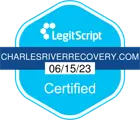Your Guide to the Opioid Epidemic
Opioids, like fentanyl and hydrocodone, are potent drugs that often bring about substance use disorders among people who consume too much of these drugs. Since 1999, more than 650,000 people have died as a result of overdosing on opioids. While opioids have always had the potential to cause a substance use disorder, the opioid epidemic hasn’t always been around. Understanding how the opioid epidemic started is necessary to discover ways to tackle this issue.
What Are Opioids?
Opioids are types of medications that are often prescribed by doctors in order to treat serious or long-lasting pain. People who are experiencing chronic backaches or headaches will often receive a prescription for an opioid. The same is true of individuals who are recovering from cancer, who have just had surgery, or who have sustained an injury from a fall or car accident.
The different side effects that occur when taking opioids include:
- Constipation
- Nausea
- Sleepiness
- Slowed heart rate
- Shallow breathing
- Unconsciousness
If you stop consuming opioids, you might encounter symptoms, like insomnia. Keep in mind that a substance use disorder is also possible. The types of opioids that you can be prescribed include:
- Fentanyl
- Codeine
- Oxymorphone
- Oxycodone
- Hydrocodone
- Morphine
These medications can be prescribed in different forms and strengths depending on the level of pain you’re experiencing. Certain opioids are illegal and can’t be prescribed, the primary of which is heroin.
Opioid Safety Tips
If you receive a prescription for opioids, there are some basic safety tips to follow. For example, talk to your physician before you take the drug. It’s possible that there are other pain-relieving alternatives that aren’t classified as opioids. Some medications that are designed to relieve pain don’t cause the same risk of developing a substance use disorder.
In the event that opioids are the main option available to you, ask your doctor what steps you can take to mitigate the side effects and risks associated with the medication. Make sure the medical professionals who treat you have access to all your past medical conditions. If you’ve consumed opioids before now, your physician should know about this. People who have a history of substance use disorders–even those involving legal drugs like alcohol–should also inform their physicians of this.
There are numerous side effects that you should be on the lookout for. While some of the side effects are relatively mild, others are more severe and may point toward an overdose. If you experience any symptoms that indicate an overdose, all emergency medical services immediately.
Because of how dangerous opioids can be, they should only be taken as prescribed by your physician or doctor. Thoroughly read the label on your prescription bottle to make sure you understand how and when to take your medication. If you’re currently taking other medications, you should ask your doctor if you can still take opioids.
When you’re about to go through surgery but are taking opioids, speak with your anesthesiologist or surgeon. There are times when heavy use of opioids can make you more likely to experience complications during surgery.
Why Are Opioids Addictive?
Opioids attach to opioid receptors on the nerve cells in your brain and other areas of your body. When this connection occurs, the medication will block certain pain messages that are sent from your body to your brain. Even though these medications can reduce the amount of pain you feel, taking them for an extended period can also lead to a substance use disorder.
Opioid Epidemic Timeline
Despite the fact that opioids have always been able to cause substance use disorders, opioid use turned into an epidemic in the 1990s. The epidemic itself can be separated into three separate waves.
Initial Wave
The initial wave of the epidemic started in 1991, which is when opioids began to be prescribed at a higher rate for the purpose of treating pain. At this time, pharmaceutical companies were providing doctors and physicians with reassurance that the risk of becoming addicted to opioids was low or nonexistent.
Before the ’90s, opioids were mainly prescribed to individuals who were going through cancer and were experiencing a severe amount of pain. As the 20th century came to a close, pharmaceutical companies shifted toward promoting opioids to people even if they weren’t suffering from cancer-related pain.
During these promotions, the companies that made the most popular opioid medications would extol the benefits of opioids despite the lack of research into the possible risks. By the dawn of the 21st century, around 86% of people using opioids were doing so to treat noncancerous pain. Higher substance use disorder rates quickly followed.
Second Wave
The second wave of this epidemic began in 2010, which is when the rate of deaths from heroin use disorders increased substantially. As the dangers of opioids became more apparent, doctors began prescribing them less frequently. Also, the cost of maintaining a long-term opioid habit became unstainable for many people. These factors led to the rise of heroin, which provides the same effects as opioids but is widely available and considerably more affordable. At this time, heroin use increased among every socioeconomic group.
Between 2002 and 2013, heroin-related overdoses increased by nearly 300%. This particular opioid is often injected, which increases the chances that those who suffer from diseases that are caused by infections. These diseases include everything from bloodstream infections to HIV.
Third Wave
The third and most recent wave of this epidemic started in 2013, which is when synthetic opioids rose sharply in popularity. Among the strongest of these opioids is fentanyl, which can be prescribed for severe pain but is highly addictive. In 2021, more than 67,000 people died from fentanyl-related issues. The higher rate of fentanyl deaths is the result of fentanyl being illegally manufactured and used in other drugs. Because fentanyl is so much stronger than typical opioids, people who use it accidentally can easily overdose if they do not have a tolerance built up to opioids.
Events in Recent Years
While fentanyl is a legal drug that can be prescribed by your doctor, it’s been the foremost concern with opioids in recent years. This drug was first created in the 1960s and was given to people as a type of intravenous anesthetic. Even though it’s still used in many healthcare settings, governments around the world are beginning to focus on the damaging effects that this opioid can have on the body. In fact, the current Department of Homeland Security secretary believes that fentanyl overdoses represent the most significant challenge the country faces.
The majority of heroin that gets into the U.S. is made on farms in Mexico. In fact, most of the production in Mexico is controlled by just a few main cartels that have placed distribution hubs in many of the largest U.S. cities. These drugs are oftentimes smuggled into the U.S. via passenger and commercial vehicles.
Even though fentanyl is legal in the U.S. when prescribed by a doctor, it’s still smuggled over the southern border as well as from China. While China used to be the main source of fentanyl, its share of the industry has dropped since 2019.
How the CDC Is Tackling This Epidemic
The CDC is currently taking numerous steps to lower the risk of taking opioids while also increasing the number of pain treatment solutions that people have access to. The CDC has put out extensive guidelines centered around prescribing opioids for pain that isn’t cancer-related. These recommendations effectively tell doctors and physicians that other pain-relieving medications should be used as the initial step when treating chronic pain. The CDC believes that opioids need to be used only after doctors have monitored the recovery process as well as the effects of other medications.
While the CDC is attempting to limit the use of fentanyl and other opioids in healthcare settings, these efforts have been challenged and directly opposed by the pharmaceutical industry via their advocacy and lobbying groups. The purpose of these efforts is to stop measures that could permanently restrict how often opioids are prescribed by doctors. Pharmaceutical companies are also trying to weaken CDC guidelines.
How to Stop Taking Opioids
If you believe that you’re taking too many opioids, it’s a good idea to examine your symptoms and then have a frank conversation with your care team about them. Healthcare professionals may be able to reduce your prescription and monitor the response your body has. The symptoms of an opioid withdrawal include:
- Insomnia
- Anxiety
- Tremors
- Diarrhea
- Drug cravings
- Abdominal pain
If you’re experiencing a substance use disorder, there are several treatment options available to you, which include outpatient and inpatient rehab. Treatment programs often begin with detoxification to ensure you can stop using the drug without experiencing severe withdrawal symptoms.
Enter Treatment at Charles River Recovery
Charles River Recovery is a treatment center in Weston, MA that offers a wide selection of treatment programs, one of which involves opioid and heroin use disorders. This program begins with a medically supervised detox process that’s administered 24/7 until the drugs are out of your system.
Once the detoxification process is over, we provide clinical stabilization services with a focus on long-term recovery. This is an inpatient program, which means that group therapy and individual therapy are administered in a residential facility.
Even when prescribed, opioids have the potential to cause substance use disorders. If you’ve received a prescription for any type of opioid, look for any signs that your body is starting to become dependent on the drug. In this scenario, there are several types of treatment programs you can enter.






